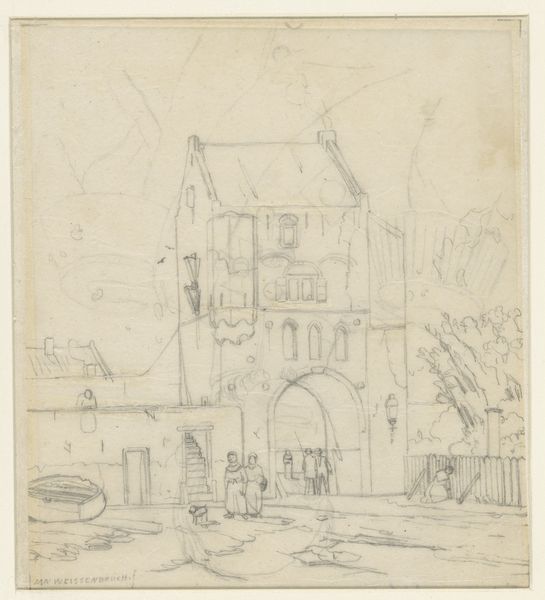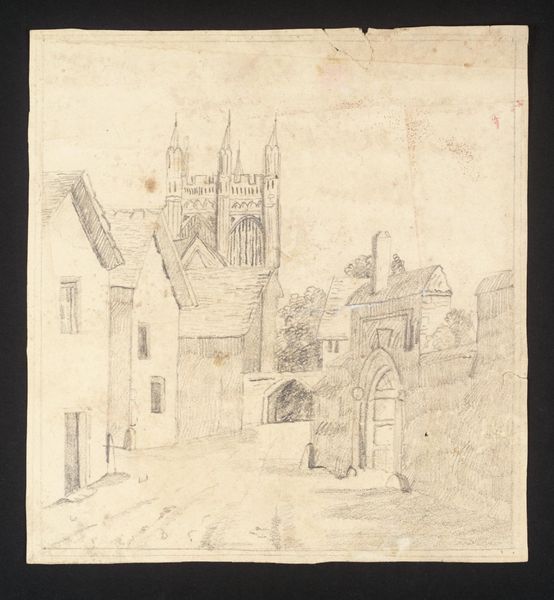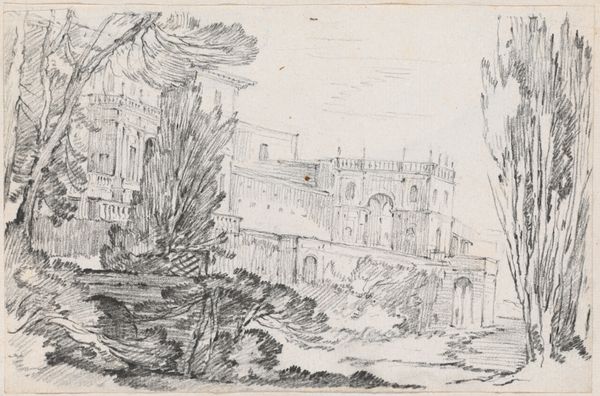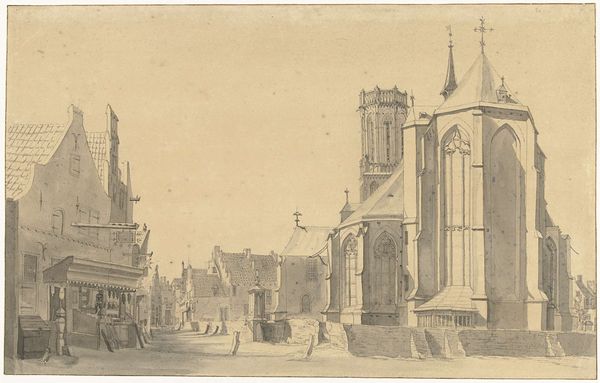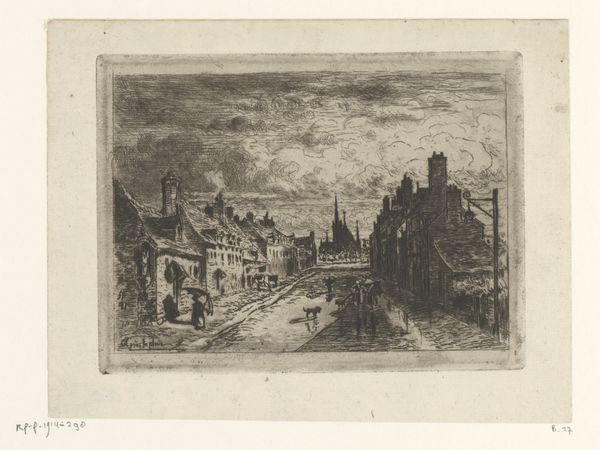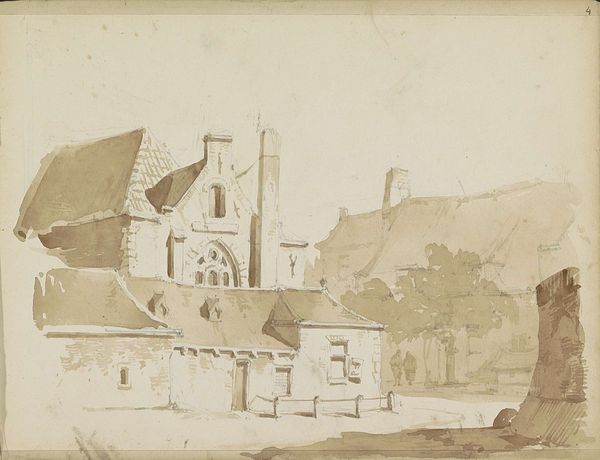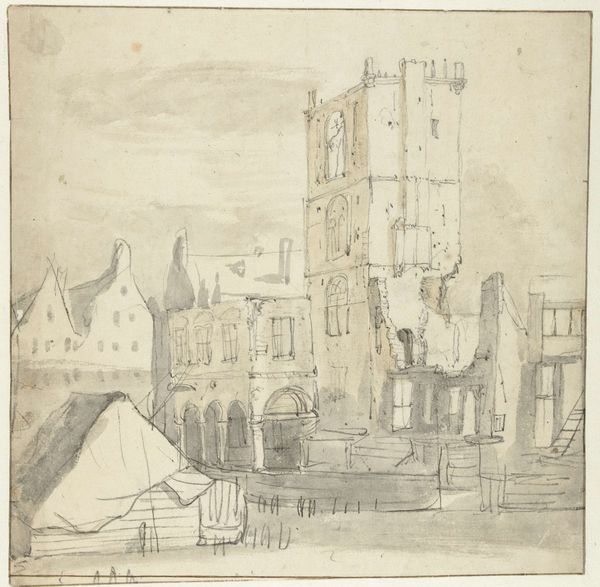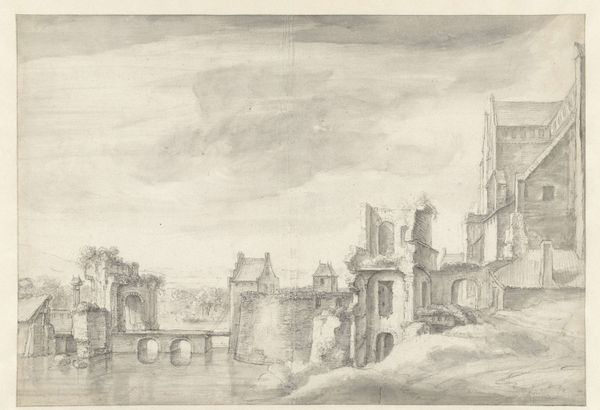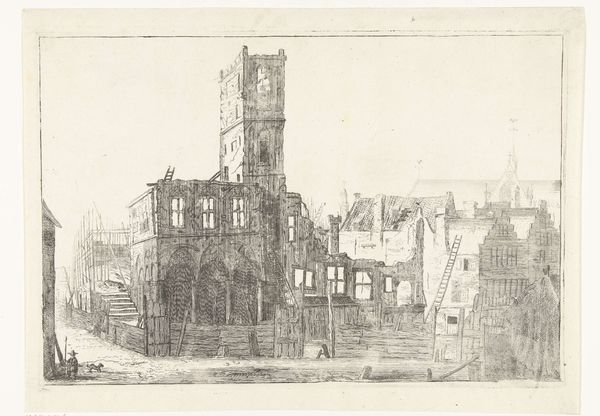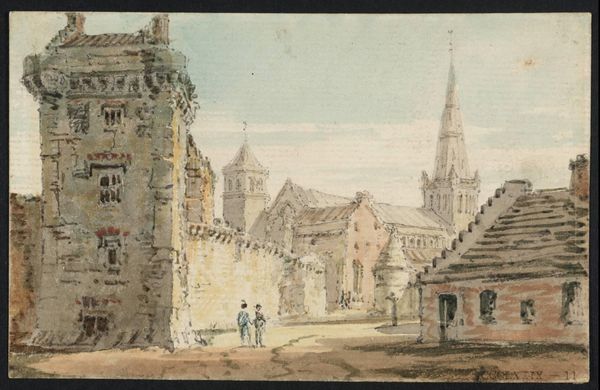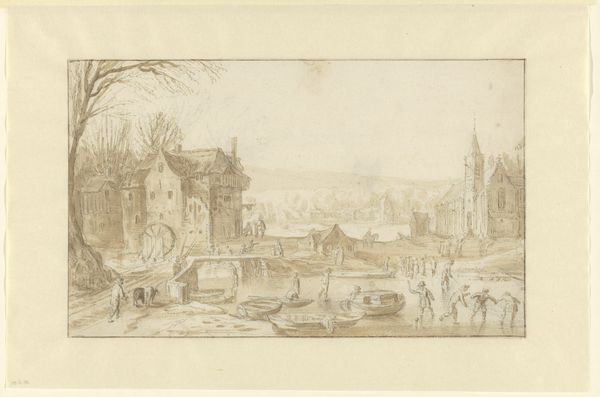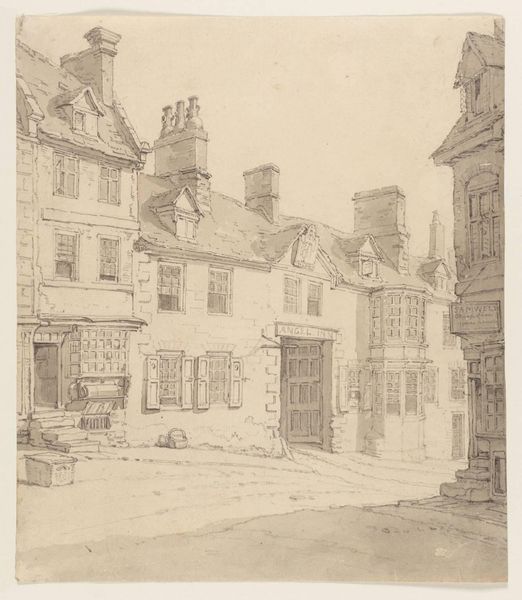
Dimensions: 319 mm (height) x 404 mm (width) (bladmaal)
Editor: So, this is Augustin Coppens’ "A City in Ruins," likely made between 1668 and 1740. It's an ink and watercolor drawing. It feels both romantic and unsettling at the same time. What strikes you most about this piece? Curator: I see a potent commentary on power and its fragility. Notice the destroyed buildings, monuments of societal strength now reduced to rubble. Consider what events might have led to such destruction – war, natural disaster, societal collapse. This image becomes a canvas onto which we project historical traumas and anxieties. Who suffers when a city is in ruins? And who profits? Editor: It’s interesting that you immediately focus on the power dynamics. I was thinking more about the picturesque quality of the ruins themselves, how they seem almost beautiful. Curator: Beauty and destruction aren’t mutually exclusive, are they? Consider the concept of ruins within the Romantic movement – often idealized symbols of a lost, often patriarchal, past, prompting questions of whose history is being romanticized and at what cost. Is Coppens complicit in this idealization, or is there a subtle critique present? Editor: I see your point. By focusing on the ruins, are we ignoring the people who were affected? I guess the lone figure in the foreground adds a human element. Curator: Precisely. And what does their placement signify? Are they a survivor, a refugee, a witness to history? The figure forces us to confront the human cost often obscured by grand narratives of empires and nations. It also raises questions of resilience. How do societies rebuild, remember, and reconcile after such devastation? What’s being done for these communities and those displaced right now? Editor: I hadn’t really thought about it in terms of contemporary relevance, but that makes it much more powerful. So much more than just an old drawing. Curator: Exactly! It encourages us to actively question and connect these seemingly distant historical representations with current struggles. Editor: Thank you – this has completely changed my view of this work!
Comments
No comments
Be the first to comment and join the conversation on the ultimate creative platform.

